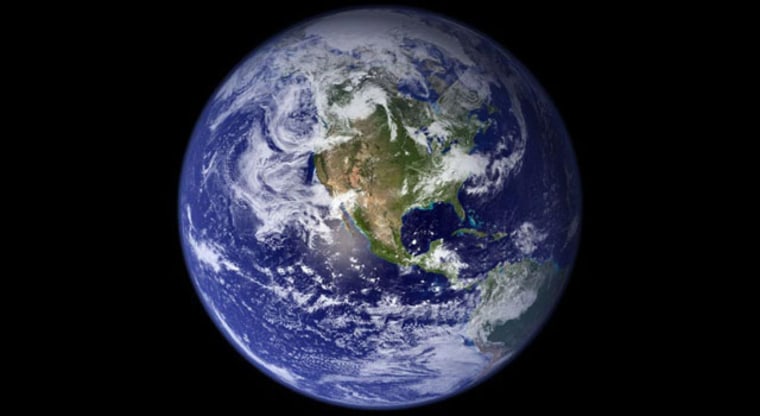The massive 8.8 earthquake that struck Chile may have changed the entire Earth's rotation and shortened the length of days on our planet, a NASA scientist said Monday.
The quake, the seventh strongest earthquake in recorded history, hit Chile Saturday and should have shortened the length of an Earth day by 1.26 microseconds, according to research scientist Richard Gross at NASA's Jet Propulsion Laboratory in Pasadena, Calif. One microsecond is one-millionth of a second long.
“This change should be permanent,” Gross told SPACE.com today. There is a chance the Earth’s rotation could relax over time, but it is too early to tell, he said.
The computer model used by Gross and his colleagues to determine the effects of the Chile earthquake effect also found that it should have moved Earth's figure axis by about 3 inches (8 cm or 27 milliarcseconds).
"Perhaps more impressive is how much the quake shifted Earth's axis," NASA officials said in a Monday update.
The Earth's figure axis is not the same as its north-south axis, which it spins around once every day at a speed of about 1,000 mph (1,604 kph).
The figure axis is the axis around which the Earth's mass is balanced. It is offset from the Earth's north-south axis by about 33 feet (10 meters).
Strong earthquakes have altered Earth's days and its axis in the past. The 9.1 Sumatran earthquake in 2004, which set off a deadly tsunami, should have shortened Earth's days by 6.8 microseconds and shifted its axis by about 2.76 inches (7 cm, or 2.32 milliarcseconds).
One Earth day is about 24 hours, or 86,400 seconds, long. Over the course of a year, the length of a day normally changes gradually by about one millisecond, which is 1,000 microseconds.
That variation is due to seasonal variations in the Earth’s ocean currents and the atmosphere’s jet stream, Gross said. As the jet stream shifts southward during the winter months in the Earth’s northern hemisphere, the length of the day gradually changes, he said.
In the past, Gross has said that Earth’s rotation slows down slightly in during the northern winter months, then picks back up in the northern summer.
The Chile earthquake was much smaller than the Sumatran temblor, but its effects on the Earth still have an impact because of its location. Its epicenter was located in the Earth's mid-latitudes rather than near the equator like the Sumatran event.
Gross compared the Sumatran event to a figure skater drawing her arms inward during a spin to turn faster on the ice. Since the Sumatran quake was closer to the Earth’s equator, its day-shortening effect is stronger than the Chile temblor, he said.
But the fault responsible for the 2010 Chile quake also slices through Earth at a steeper angle than the Sumatran quake's fault, NASA scientists said.
"This makes the Chile fault more effective in moving Earth's mass vertically and hence more effective in shifting Earth's figure axis," NASA officials said.
Gross said his findings are based on early data available on the Chile earthquake. He is confident in the computer model’s accuracy, with only slight tweaks expected to be required, he said.
The Chile earthquake has killed more than 700 people and caused widespread devastation in the South American country.
Several major telescopes in Chile's Atacama Desert have escaped damage, according to the European Southern Observatory managing them.
A salt-measuring NASA satellite instrument destined to be installed on an Argentinean satellite was also undamaged in the earthquake, JPL officials said.
The Aquarius instrument was in the city of Bariloche, Argentina, where it is being installed in the Satelite de Aplicaciones Cientificas (SAC-D) satellite. The satellite integration facility is about 365 miles (588 km) from the Chile quake's epicenter.
The Aquarius instrument is designed to provide monthly global maps of the ocean's salt concentration in order to track current circulation and its role in climate change.
